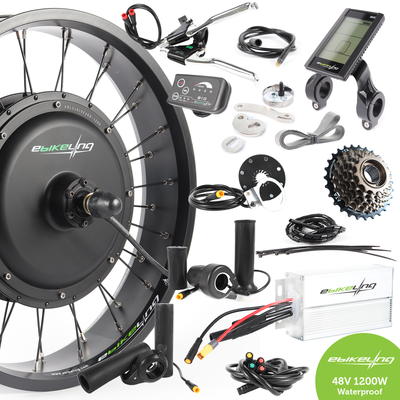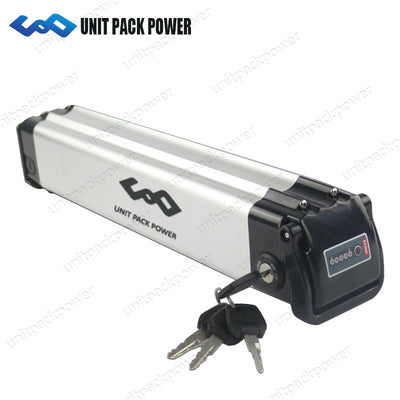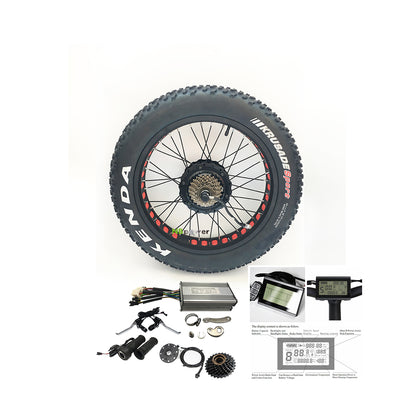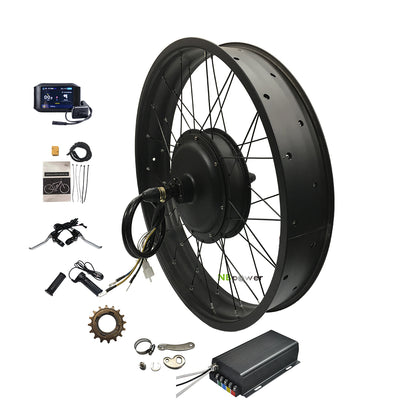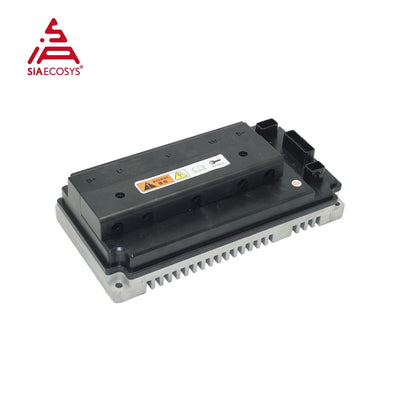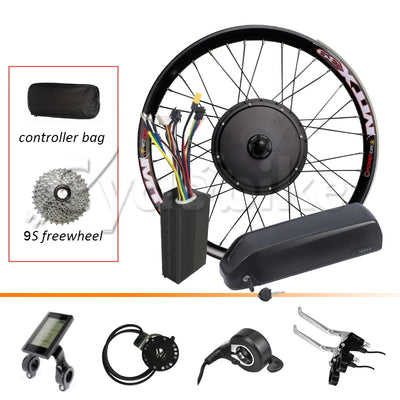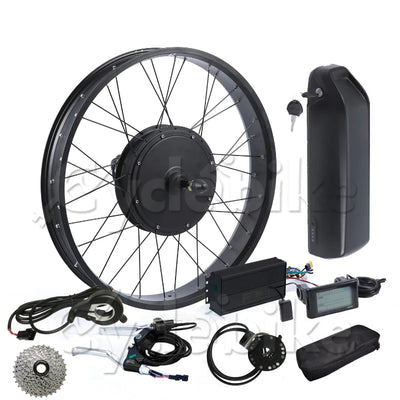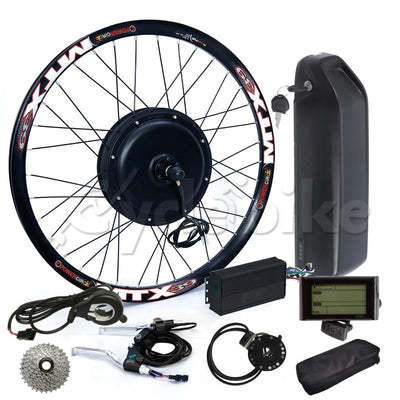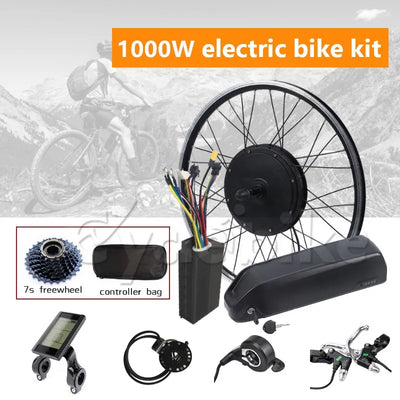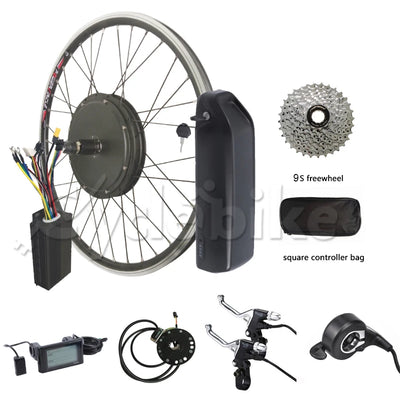The Science of Energy: How E-Bike Batteries Work
Posted by Tom Lee on
If just 22% of urban passengers worldwide used e-bikes, emissions would be reduced 47%. That saves $128 trillion when compared to how we travel today, not to mention the positive effect on the environment.
In a world where burning fossil fuels impacts climate change, e-bikes offer an environmentally-friendly and economical mode of transport. E-bikes are changing the transportation game for cycling enthusiasts, but their maintenance takes a little more know-how than your traditional bicycle.
Whether you bought your e-bike already assembled or converted your everyday bicycle, one of the most important parts of your e-bike is its battery. But how do e-bike batteries work and what should you know about maintaining them?
In this guide, we’ll break down everything you need to know about your e-bike batteries so that you know what to look for when purchasing and maintaining your e-bike.
Why an Electric Bike?
Switching from the comfort of an automobile to using a bike means a lot more work to get around, right? Wrong. Using an e-bike reduces the amount of peddling you’d do on a traditional bike and, based on the e-bike you purchase, you can choose when to pedal and when to simply sit back and enjoy the ride.
Besides getting you out of your car and into the sunshine more often, e-bikes are also one of the most environmentally friendly forms of transportation currently available. Instead of burning fossil fuels to generate power, e-bikes use sustainable, rechargeable batteries.
Parts of an Electric Bike
E-bikes contain four key components: brakes, motor, frame, and battery.
Brakes
Some e-bikes use regenerative braking. When you pedal or go downhill, the wheels power the motor and charge the battery.
This braking system is more helpful for heavy, high-velocity vehicles like electric cars that gain and lose a lot of kinetic energy when they start and stop. An e-bike works just fine with traditional bicycle brakes and regenerative brakes are often just an added cost.
Electric Motor
E-bikes have compact electric motors that are usually placed into the hub of the back or front wheel. The electric motor determines whether your e-bike is full-power or power-assisted:
- Full-power: These e-bikes are best for people who want to pedal minimally and travel only short distances. The batteries are large and they also have powerful hub motors.
- Power-assist: These are also known as pedal-assist bikes. A power-assist e-bike is pedaled often and only use power when you need a break. Instead of hub motors, they have electric motors near the back wheel.
Frame
The frame of an e-bike is different than that of a traditional bicycle.
The frame is made from a light, aluminum alloy. How light your frame is will impacts how far you can travel before having to charge your battery (the heavier it is, the sooner you have to charge).
The spokes on an e-bike are made stronger than those on a traditional bike. Because the motor spins the wheels with a lot of torque, the typically thin and light spokes of an ordinary bike would bend or buckle.
Batteries
Because they hold all the power that moves the bike, batteries are the most important part of an e-bike. Finding the right battery is balancing act between finding one that stores a lot of power without being too big and heavy for you to pedal with.
Many of the original e-bikes used lead-acid batteries. Typically used for starting cars, these batteries are cheap but extremely heavy. They also take far too much time to charge.
Today, most e-bikes use lithium-ion batteries. Similar to the batteries used in laptops and cell phones, these are lightweight, require little maintenance and last a lot longer than lead-acid or nickel-cadmium batteries.

Magdi’s LEED ebike conversion on a fat bike tandem. We really want to ride this . It looks awesome!#ebike #leedebike #ebikekit #ridelife #electricbike #ebikelife #bikelife #bikecommute #bicycle #tandembike #leed4fav
Understanding Volts, Amps, and Watts
These are commonly used terms that you’ll see listed on your e-bike battery pack. Here’s what they mean and why they’re important.
Volts
Volts are a measure of how fast electrons move. They determine the strength of electric power.
A high voltage e-bike goes faster. More voltage equals more speed.
E-bike batteries can be found in voltages from 24V-72V, and manufacturers include this specification on their products because it gives you a good idea of how much power you’re getting for your money.
Amps
Amps, or amperes, measure force. In other words, the volume or quantity of electric power that can flow through.
Think of it this way: the wider a pipe is, the more water can flow through. Amps work the same way but they flow through wires. That’s why a battery with a high amperage requires thicker wires and larger batteries.
Watts
The combination of volts and amps are what give you watts. Volts multiplied by amps equals watts.
If you want to use the motor more than you want to pedal, look for a motor with a peak consumption of 600 watts or more. If you prefer to do most of the pedaling and only require the motor when you’re tired or need a break, you’ll only need a motor with a peak of 200 watts.
Amp Hours (Ah)
This measure tells you how many amps a battery can sustain for an entire hour.
The more amp hours, the more distance you get. Most e-bikes fall within a 10 to 20 amp hour range.
Watt Hours (Wh)
Although it’s not often provided, watt-hours combine volts and amp hours to determine the total energy of the battery.
In terms of your e-bike batteries, this is the most accurate measure of usable energy and how far you can travel on a full charge.
How Long Does a Battery Last?
Traveling between 10 and 20 mph, the range your battery provides will vary between 10 and 40 miles.
If you’re using a power-assist e-bike, you can expect an average of 40 miles. But of course, that depends on a number of factors that we’ll talk more about later.
Some e-bikes have an extended range battery that will provide between 30 and 60 miles, under the same conditions.
External Factors Affecting Range
There are a number of external factors that impact the range of your battery.
- Hills, headwinds, and heavy loads will decrease the range.
- An inefficient motor will lose energy and decrease your range.
- A well-maintained bike will go further. Keep your chain lubricated, check your tire pressure and make sure your bike is in good condition.
- Lower tire pressure will give you less range. Getting the optimal bike tire pressure, or at least close to what you need, is an art of its own.
- Pedal when you’re accelerating or climbing will help your battery last longer.
Is Bigger, Better?
When it comes to e-bikes, bigger isn’t necessarily better. Sure, a bigger battery can hold a charge longer but that means you have to pedal with the added weight and find a place to mount it.
Some e-bikes will claim to get 100 miles on a single charge. Claims that sound too good to be true usually are – a range of 100 miles would require a bulky, heavy battery.
Charging Your E-Bike Batteries
Besides having a fully charged battery before heading out on a trip, there are a number of tips to help you charge and care for your battery
- Your battery can be charged while it’s still attached to the bike for sake of ease. You can also remove your battery from its mount and charge it in a wall outlet. This method allows you to swap out your dead battery for a fully charged one.
- A lithium-ion battery takes anywhere from 4 to 6 hours to charge fully. It’s recommended that you allow your e-bike batteries to charge fully before use. Partially charging it more often than not can affect your battery life in the long term.
- Most e-bike batteries operate as smart batteries. The power cell has a built-in management system that prevents under or overcharging. Thanks to this intelligent system, leaving your battery charging overnight won’t cause any damage to your battery.
- It’s really inexpensive to charge your e-bike batteries. It costs about 8 cents to charge it in your wall outlet.
Where Does the Battery Go?
When you get the right size battery and mount it properly, you don’t even notice that it’s there.
They can be mounted on the e-bikes rear rack or into a down tube of the bike frame itself.
Disposing of Your Battery
When your e-bike batteries die, and they eventually will, you can’t simply throw them away with your trash.
Less than 5% of lithium-ion batteries get recycled. Improper disposal can have negatives effects on the environment, such as releasing toxic gases and contributing to water pollution.
Disposing of your e-bike batteries properly is as easy as finding a recycling depot that receives batteries. Stores like Home Depot and Lowes often offer battery drop-off as well.
Finding the Battery for You
Depending on whether you have a power-assist or full-power e-bike, the kind of e-bike batteries you need will differ. You also need to consider the terrain you typically ride, the distance of your travel and how much extra weight you’re willing to carry.
Ready for a new battery? Check out all the e-bike batteries we carry and find one that’s perfect for your lifestyle.



